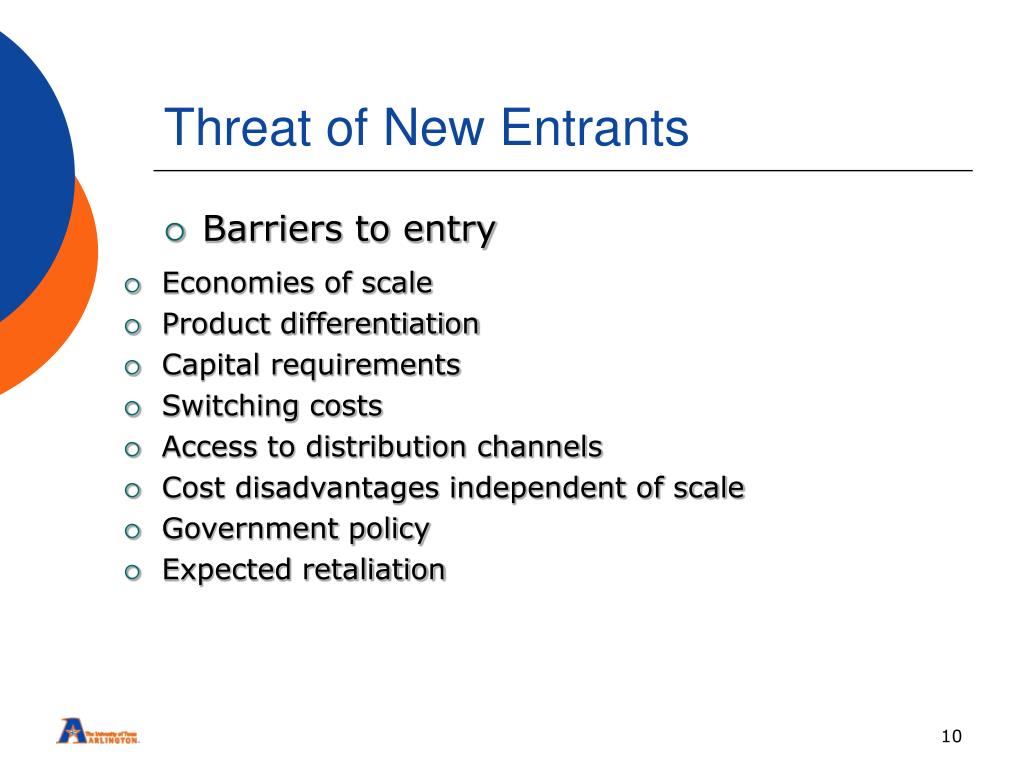

New competitors entering the marketplace can either threaten or decrease the market share and profitability of existing competitors and may result in changes to existing product quality or price levels. For example, a high threat of entry means new competitors are likely to be attracted to the profits of the industry and can enter the industry with ease. The threat of new entrants Porter created affects the competitive environment for the existing competitors and influences the ability of existing firms to achieve profitability. Thus, Porters threat of new entrants definition revolutionized the way people look at competition in an industry. According to Porter’s 5 forces, threat of new entrants is one of the forces that shape the competitive structure of an industry.

More competition – or increased production capacity without concurrent increase in consumer demand – means less profit to go around. If it is easy for these new entrants to enter the market – if entry barriers are low – then this poses a threat to the firms already competing in that market. Therefore, a profitable industry will attract more competitors looking to achieve profits.

In Porters five forces, threat of new entrants refers to the threat new competitors pose to existing competitors in an industry. Research & Industry Implications – The industry will find this research of practical value, especially for SME industries that can use the outcomes of this study to devise their strategies for the growth and competition assessment.Jul 24 Back To Home Threat of New Entrants (one of Porter’s Five Forces)Ĭomplementors (Sixth Force) Threat of New Entrants Definition This study follows in his footprints and applies the Porter model on Indian pharma industry with special reference to the SME units. However, there is very limited research on the analysis of pharma industry using Porter model, apart from the pioneering work of Michael Dobbs. Originality – Many researchers have studied the Porter model in theory and some other have studied the different aspects of pharmaceutical industry.

Purpose – The author aims to study the major driving forces that affect the operational efficiency of the Indian pharmaceutical industry with special reference to the SME pharmaceutical companies in India.ĭesign / Methodology / Approach – Porter’s Five Force Model is used as a frame of reference in order to gauge the effect of the various environmental and regulatory forces that affect the working of Indian SME pharmaceutical industry, using Regression Analysis as the main tool.įindings – The reliability and the Regression equation derived from the Regression Analysis showed that competitive rivalry among existing firms is the strongest force, followed by bargaining power of buyers, threat of new entrants, bargaining power of suppliers and the threat of substitute products in that order.


 0 kommentar(er)
0 kommentar(er)
